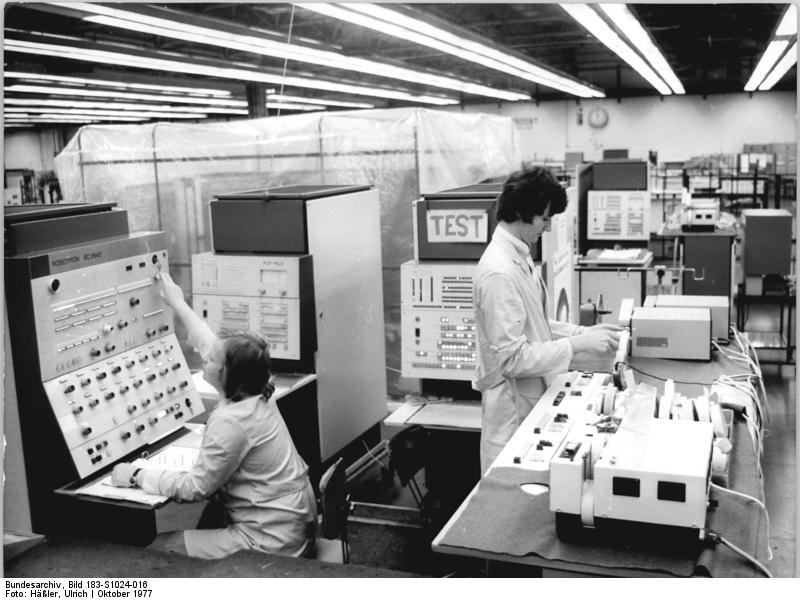In 2006, Russian auteur Ilya Khrzhanovsky decided to produce a film titled “DAU” about Lev Landau, a prominent Soviet physicist and 1962 Nobel laureate. Khrzhanovsky obsessed for two years over how the film could achieve total authenticity. In 2008, he settled on an audacious, eccentric, and arguably dangerous strategy: he would transform an abandoned swimming pool complex in Kharkiv, Ukraine into a perfect replica of a 1960s Soviet research institute. This re-purposed swimming pool complex would serve as DAU’s primary set. Perhaps in an attempt to echo method-acting techniques, Khrzhanovsky demanded that the set be called “The Institute” at all times during the shoot. He hired around 300 actors, assigning each one a profession within “The Institute”. The actors were to reside in the institute at all times, committing to live as Soviet engineers, physicists, and doctors. They would be recorded fulfilling their duties in The Institute as if the film were a documentary. It would be as authentic as possible.
The subsequent unfolding of this story sounds much like the plot of Frankenstein: a director loses control of his film and witnesses it develop into an uncontrollable, anarchical entity. The story also sounds much like the outcome of the now infamous Stanford Prison Experiment. At the very least, it is likely to be one of the most bizarre art pieces of the decade.
Shooting lasted for three years. During this time period, the actors never stepped outside of The Institute. Khrzhanovsky never interfered with the events within the capsule, though some reports do indicate that he took advantage of his power as the film’s director, attempting to sleep with actresses in exchange for favors.
The Institute rapidly devolved into a strange organism of its own. Fights broke out, residents married one another, and over a dozen babies born on set. It became a living and breathing time capsule, completely isolated from the rest of human society. Tablet Magazine described DAU as, “A miniature city lost in time, complete with its own schools, cafes, dentists, opticians, and internal apparatus of repression.”
It’s likely that Khrzhanovsky only stopped the shoot after realizing that the project could have continued on forever. Entire lives might have been lived within what some have dubbed “The Stalinist Truman Show.”
When the footage was debuted in Paris in January, the resounding critical consensus was that the project lacked any identifiable objective. The grandeur of Khrzhanovsky’s project was undoubtedly compelling, yet little was to be found under the shock factor’s veneer: one “film” (of the 13 that were made from the gargantuan amounts of footage) showed two mentally-handicapped men fondling each other naked, with voice-overs of their dialogue performed (inexplicably) by Gérard Depardieu and Willem Dafoe. Another film featured on-screen penetrative sex, which one critic identified as simply pornography.
When a critic asked Khrzhanovsky what he hoped people would learn from the project, he abstractly replied, “that they can feel something about themselves, and I don’t know what, because people are so different.” This vague response leaves something to be desired, and perhaps elucidates the project’s true lack of underlying purpose. One critic from Spectator dryly remarked that the project amounted to little more than a “highbrow Fyre Festival.”
DAU, however, is merely the latest installation within a collection of “art projects” that have achieved fame and notoriety through the public controversy they engender. Sheer horror has served as a shanty substitute for true artistic purpose in countless pieces of performance art. Consider the Russian artist Petr Pavlensky, who nailed his scrotum to the Red Square in 2014 as, “a metaphor for the apathy, political indifference and fatalism of modern Russian society.” Despite Pavlensky’s vague, diluted objective for the piece, his violent and public act of self-harm remains seared in the minds of viewers. Chris Burden’s 1971 project “Shoot”, in which the artist was voluntarily shot with a .22 at close range; or Andres Serrano’s “Piss Christ”, which features a picture of a crucifix immersed in glass tank of the artist’s urine both achieved similarly controversial responses despite their apparent purposelessness.
Performance art projects such as Khrzhanovsky’s, Pavlensky’s, and Burden’s might be more aptly described as forms of psychological torture, self harm, or purposeless brutality. Yet we lend these projects credibility through our reliable captivation. In this sense, these pieces do elucidate one paradoxical societal issue: these exhibitionistic demonstrations of human suffering capture our attention, and our unwavering attention to them sustains their existence.
Photo: “Mainframe in East Germany“
